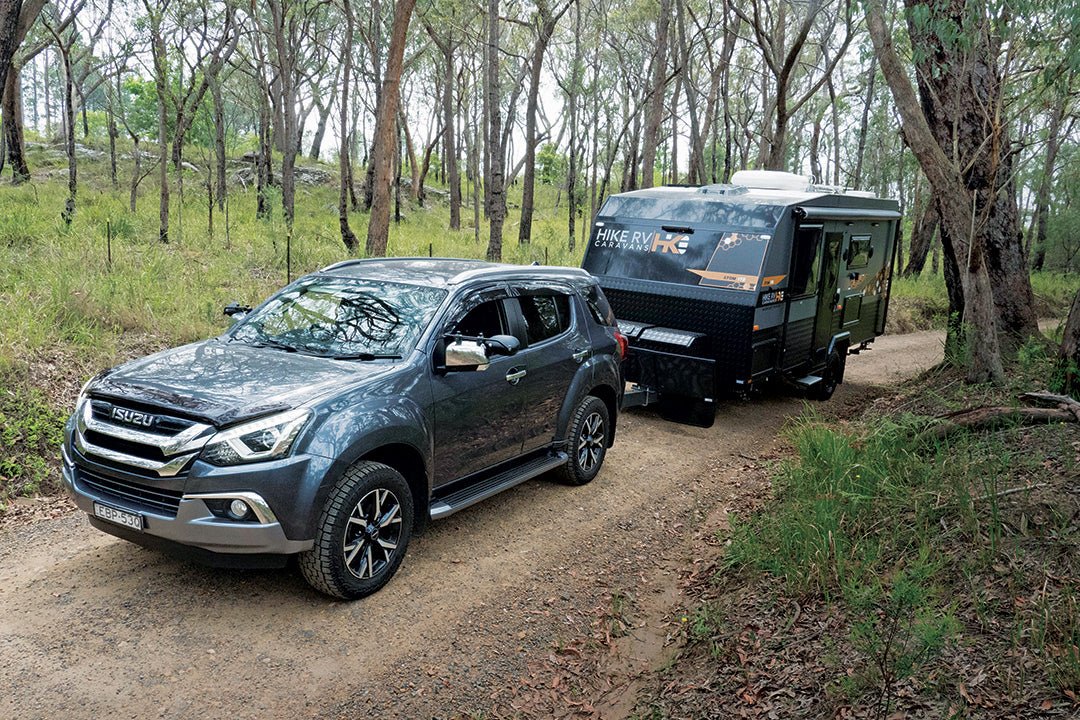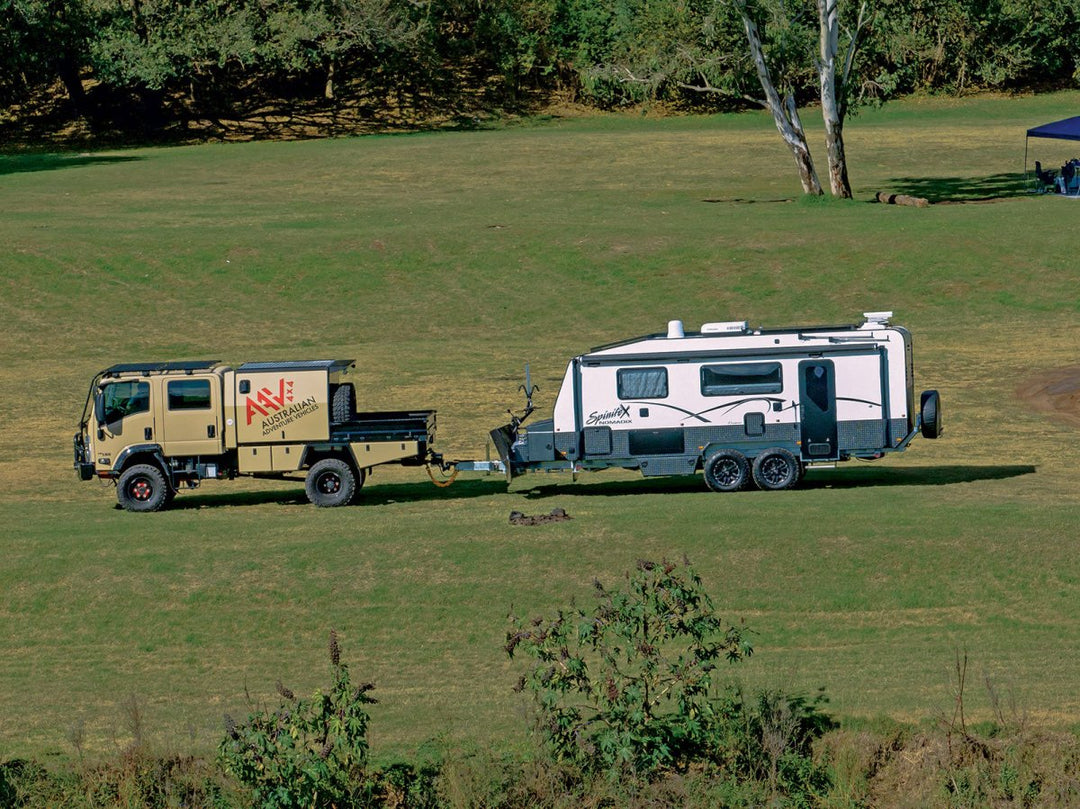Booderee National Park, NSW

The sand under foot is soft as silk and blindingly white. Crystal clear wavelets roll in from a bay so incredibly blue, it mirrors the cloudless sky. It could be a remote tropical paradise in the Whitsundays or a stretch of remote wilderness like Ningaloo. But no, this idyllic beach is Green Patch in the Booderee National Park, 200km south of Sydney.
Green Patch is one of several pristine strands fringing the northern shore of the park, which covers 90 per cent (almost 6800ha) of the Bherwerre Peninsula and 875ha of adjacent marine environment. The Jervis Bay Nature Reserve was declared in 1971 and transferred to the Wreck Bay Community in 1995. It is managed jointly with National Parks, with local Indigenous people accounting for nearly 80 per cent of park staff and contractors. In 2010, the Wreck Bay Community made Australian history, taking out an international award in the Virgin Holidays' Responsible Tourism Awards.
In 1997, the national park was renamed ‘Booderee’, meaning 'bay of plenty', to reflect the amazingly rich and diverse abundance of plants and animals found within. More than 625 species of native plants — rainforest, heath, woodland, coastal scrub and mangroves—provide veritable habitats for about 206 kinds of bird, 27 mammal species, 17 amphibians and 37 reptiles. Likewise, in the famously clear, clean waters of the surrounding marine park are 180 species of fish, 13 marine mammals and two species of turtle.
One animal commonly seen in the park is the magnificent white-bellied sea-eagle, with an awe-inspiring 2.2m wingspan. It is regarded by the Kooris of Wreck Bay as their guardian and, fittingly, was adopted as the logo for the national park.
The oldest archaeological evidence of Aboriginal occupation includes a site at Burrill Lake, about 30km south of Jervis Bay, dating back more than 20,000 years. More than 100 prehistoric Aboriginal sites have been recorded in the park, concentrated at the eastern end of Wreck Bay. The majority are shell middens, ceremonial bora grounds and sites of axe grinding and stone flaking. Rock shelters and burial sites also exist elsewhere in the park.
CAVE BEACH
More than 400,000 people visit Booderee each year, and the park’s world class beaches and the clear waters of Jervis Bay are its prime attractions. Visitors are spoiled for choice, with the peninsula’s north and south coasts offering very different seaside experiences.
The ‘string of pearls’ along the protected Jervis Bay shoreline begins at the park’s western end with Iluka and Green Patch, by far the most popular with families for being very safe with excellent day use facilities. Next is Bristol Point, a small, secluded beach accessed by a 10 minute walk from Green Patch around a rocky outcrop at low tide or through a hinterland forest. The tidal platforms at Scottish Rocks offer excellent snorkelling and a crescent beach that leads to an impressive natural feature known as the ‘Hole in the Wall’. Beautiful Murrays Beach lays just inside the bay’s southern tip at Governors Head, facing Bowen Island and its thriving little penguin rookery.
The beaches on the park’s southern coast are exposed to the open ocean and offer some of the best surf breaks in the region, notably the ‘South Coast Pipe’ on the western point of Summercloud Bay. Isolated Steamers Beach is flanked by high cliffs and backed by steep sand dunes believed to have been dumped there by a mega-tsunami. It’s a beach best enjoyed for its magnificent scenery, not its swimming — it's one of Australia's most dangerous beaches, with treacherous undertows and large sharks.
In the lee of Booderee’s southern tip, St Georges Head, lay Kittys and Whiting beaches, in small, sheltered coves that can only be accessed by boat or on foot. West of Wreck Bay Village, Cave Beach is a popular destination that offers excellent surfing in turquoise waters often shared with dolphins. Beyond Caves, Bherwerre Beach arcs 7km along the peninsula’s southern shore to the channel that marks the entrance to Sussex Inlet. This broad, sandy swathe is great for surfing, swimming, bird watching and beach walking.
CAMPSITES
Unpowered camping in Booderee is available at three beachside locations — Green Patch, Bristol Point and Cave Beach. The campsites are popular, well patronised and must be booked in advance through the Booderee Visitor Centre or online. Demand for sites in summer far exceeds availability and are allocated according to a ballot, with applicants notified of the outcome by September 1.
Green Patch is the only campground dedicated for RVs, though also catering for vans, camper trailers and tents in mature bushland, with discrete campsites in a range of sizes (drive-in or walk-in) ideal for families and small groups. Amenities include potable water, toilets, hot-water showers and sheltered barbecues.
Other popular aquatic pastimes within the park include boating, sailing, kayaking, jet skiing and scuba diving. Park waters are also used for overnight mooring of travelling boats and as an emergency shelter for anchoring during heavy weather. The new $750,000 boat ramp and wharf at Murrays Beach provides safer and better access to the waters off Booderee and increased tie-up space for more boats. The Summercloud Bay beach access ramp, near the Wreck Bay Community is also suitable for smaller vessels.
Fishing is another major recreational activity in the park — from rocks, boats and beaches — with the menu potential including Australian salmon, flathead, groper and mackerel. The park also provides foreshore access to St Georges Basin for seasonal prawning. As Booderee is a national park, some restrictions apply. All aquatic invertebrates on rock platforms are protected, so you’ll need to bring bait with you. You will also need a NSW fishing licence and adhere to size and bag limits. Spear fishing is prohibited and spears or spear guns are not allowed in the park.
WALKING TRAILS
With its gentle terrain, mild climate and well signposted trails, Booderee is an easy place to explore on foot. Thirty kilometres of walking tracks and fire trails provide access to most areas of the park through a variety of scenery and wildlife habitats. Walks range from gentle strolls of a few hundred metres to extended half- and full-day hikes of between five and twenty kilometres. One of the best short walks connects Murrays Beach to the lookout at Governor Head, with fantastic views to Bowen Island and over Jervis Bay. This can be combined with the 5.5km Munyunga Waraga Dhugan loop walk that includes elevated vantage points overlooking the park and spectacular clifftop locations. For the uber-fit, a series of walking trails can be combined for a 20km circuit that takes in Steamers Beach, Brooks Lookout (for expansive views of the coastline), St Georges Head, secluded Kittys and Whiting Beaches and Blacks Waterhole.
Booderee is well named for all the wonderful things it offers in abundance —superb natural environment with amazing biodiversity, scenic bays, idyllic white sand beaches, magnificent sandstone cliffs, timeless Aboriginal culture, Heritage-listed historic sites, and almost limitless opportunities for recreation and outdoor adventure. What more could you ask for?






